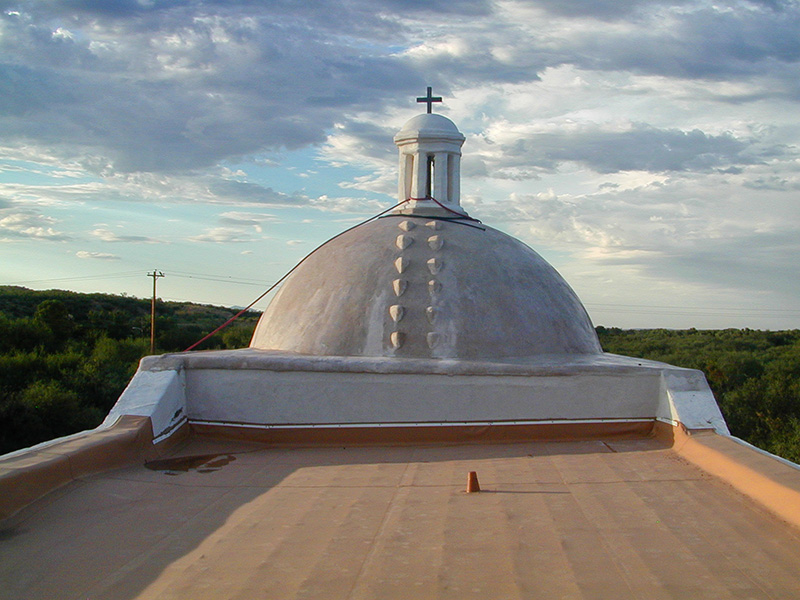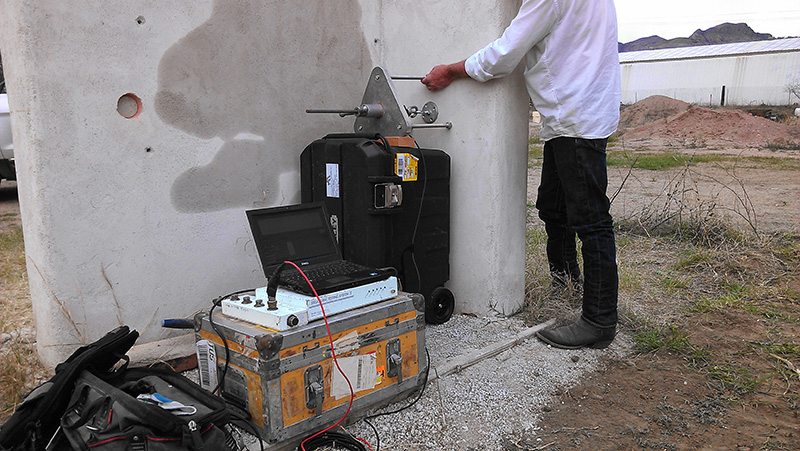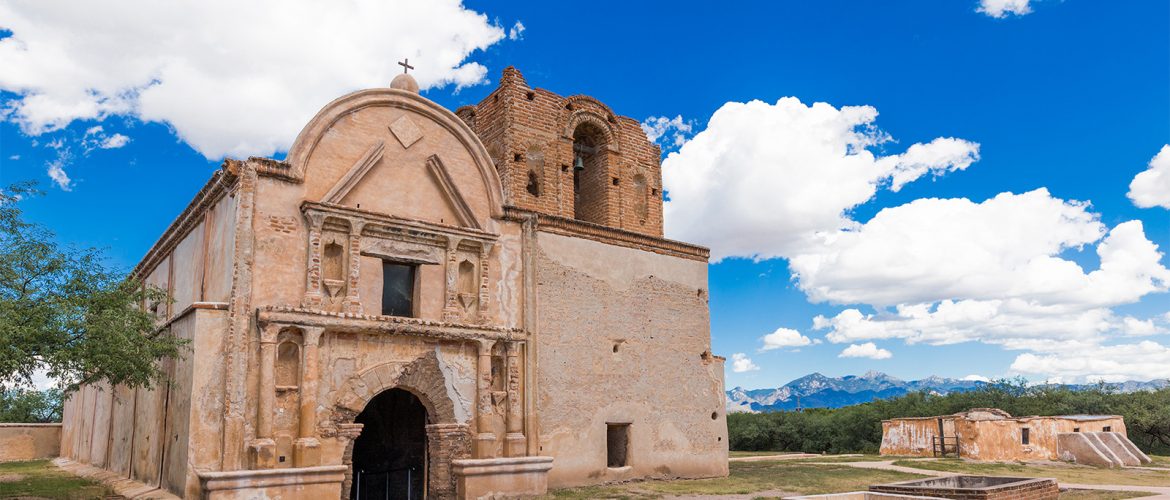Tumacácori Mission





Challenge
Dating back to the early 19th century, the church at Mission San José de Tumacácori had sustained extensive damage over the years. Two centuries of moisture penetration threatened both the structural integrity of the church—built from adobe, timber, and clay—and the historic frescos on the interior of the fired-clay masonry dome. In addition, an 1887 earthquake centered in Sonora, Mexico, had caused significant damage.
Solution
Atkinson-Noland & Associates conducted nondestructive investigations to identify moisture intrusion mechanisms and to evaluate the church construction, including masonry thickness. We also used a 3D finite element (FE) model to perform a time history analysis and determine seismic vulnerability, using ground-motion records from two earthquakes. We applied data from each earthquake independently, in two orthogonal directions coinciding with north-south and east-west. Then, we evaluated stress distributions to identify areas most susceptible to damage.
Solutions Provided
This advanced computational analysis technique aids in evaluation of structural behavior, based on accurate numerical simulation of the structural response under load. By adopting reasonable modeling strategies and material properties of the actual structure (as determined through nondestructive investigation and evaluation), finite element (FE) modeling enhances the diagnosis and understanding of damage and visual distress. FE modeling also allows for an in-depth safety evaluation of the structure, contributing to the design and validation of proposed interventions.
Infrared thermography uses a hand-held camera to detect differences in temperature as little as 0.1° F. This technique allows identification of structural features and conditions not otherwise detectable by visible light. Applications include rapid location of grouted cells within concrete block, moisture infiltration, cracks in masonry, and variations in insulation. Unlike other techniques, infrared thermography allows the quick, efficient survey of large areas.
Based on testing results and investigative findings, ANA provides recommendations for appropriate repairs, following the preservation principles outlined in the U.S. Secretary of the Interior’s Standards for the Treatment of Historic Properties. Our recommendations enhance structural safety and stability, while minimizing impact on historic material and project budgets.
This form of structural analysis assesses a structure’s resistance to earthquake loads. Seismic retrofit solutions are designed to be compatible with the existing materials. In working with historic structures, ANA uses internal strengthening techniques whenever possible to avoid altering the building’s outward appearance.
Surface-penetrating radar (SPR), also referred to as ground-penetrating radar or impulse radar, provides valuable information about structural and non-structural building components without causing damage. The radar data reveals voids, construction layers, and the presence of other materials, such as metal inclusions, as well as the thickness of the element.
Result
Our testing identified how moisture was entering the mission, laying the foundation for future repairs. The seismic vulnerability study revealed which areas faced the greatest risk of damage if another strong earthquake struck the region. Analysis of the church’s construction allowed us to recommend appropriate repairs, including strengthening techniques. For example, installing a tension ring of composite material at the base of the dome would minimize further structural damage without compromising its appearance.
Project
Tumacácori Mission
Tumacacori, Arizona
Client
School of Architecture and Planning
University of New Mexico
Albuquerque, New Mexico

